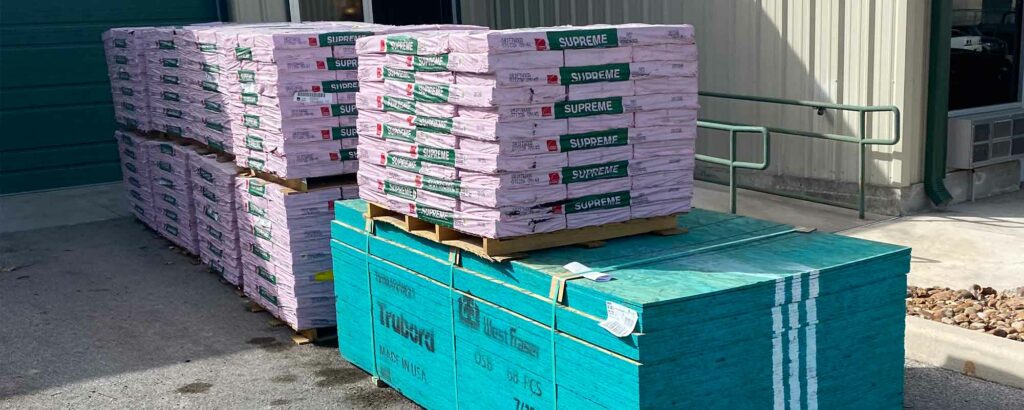Decking
A roof deck is the base or sub-structure of your roof. It is the platform that supports the rest of your roof components. It is really important to select the right material for your deck as it will be supporting the loads of your roof for decades to come and can significantly contribute to the lifespan of your entire roofing system. Because rooftop materials have to be UV, heat and weather resistant, the most common materials used for this purpose are metal and wood. In recent years, there has also been an increase in the use of synthetic materials such as PVC. Wood – Wood has been one of the most popular materials used for constructing rooftop decks since the beginning of time. It is cheap, durable, easy to work with, and has a natural resistance to rot and decay. However, it’s also heavier than metal, which can make it more challenging to work with, especially when working on a high-rise rooftop. Metal – Metal has become increasingly popular in rooftop construction over the years as a lighter yet extremely strong alternative to wood. Steel has become the most common metal used for constructing rooftop decks. Although it is much more expensive than wood, it is about 50% lighter and can be easily shaped, bent or formed.
Underlayment
An underlayment is a thin layer of material that is applied to your rooftop deck before installing your shingles. It is placed under your shingles for a variety of reasons. Underlayments are usually made from materials like synthetic rubber or aluminium. They are sometimes reinforced with a woven fabric to add strength to the material. Underlayments are used for a variety of reasons, including to improve roof drainage, roof ventilation, roof sound reduction, roof ice/snow resistance, roof thermal resistance and roof wind resistance. Underlayments are typically installed towards the bottom of your roof deck, below your shingles.
Flashing
Flashing is a term used to describe a metal or other material that is used to divert water away from a certain part of your rooftop. Flashing is usually installed on the seams or junctions of your rooftop to prevent water accumulation and any other potential damage caused by water. Flashing has become very important in the modern era, thanks to the increase in the number of people living in areas where there is heavy rainfall. It is usually used to divert water away from areas like roof valleys, wall joints, chimneys, dormers, skylights and other rooftop junctions. Flashing is also used to seal any penetrations through the roof, such as roof vents and skylights.
Shingles
Shingles are the most common material used for the top layer of your rooftop. They are installed over your decking and underlayment. They are a type of roof covering that is generally made from a type of material called asphalt. They are generally cut into shape and size and are installed in a pattern that gives your roof its distinctive look. Shingles are one of the most common materials used in residential rooftop construction as they are relatively inexpensive, easy to install and have a long lifespan. Shingles can be made from a variety of materials, including wood, synthetic materials and natural materials such as cedar. Some shingles are even made from recycled materials, giving homeowners another reason to consider them.
Ventilation
Ventilation is important for keeping your roof healthy and prolonging its lifespan. Roof ventilation can be achieved through the use of vents or louvers. There are many different types of roof vents, each designed to achieve a different goal. Some are designed to add ventilation, while others are designed to remove moisture and air contaminants. Ventilation is important as it helps to prevent your roof from becoming too hot or too cold. It also prevents your roof from rotting and can improve the overall sound insulation of your home. Roof vents can be installed on the roof deck, but they can also be installed in the roof itself. Roof vents come in a variety of different sizes and shapes, including round, square and rectangular.
Conclusion
A roof is one of the most important components of any home. It protects the people inside from weather and other potential threats, such as falling debris, fire and more. Roofs are also one of the most visible parts of any building, so it is important to select a roofing material that complements the rest of the architecture of your home. While there are many different types of roofing material available, each has its own set of benefits and challenges. When it comes to selecting the right material for your roof, it is important to know what your options are and how each of these materials can affect your roof’s performance. If you need an estimate for a roof repair or replacement, contact Agave Roofing for your free inspection and estimate.
